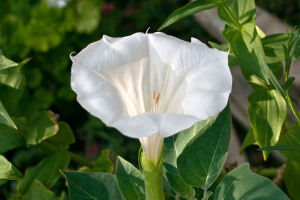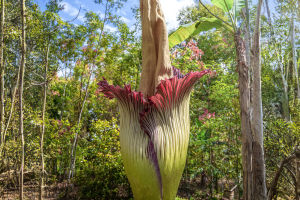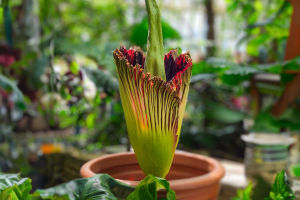Have you ever heard of a plant that has been around for centuries—so ancient, it seems almost out of place in today's world?
The Welwitschia mirabilis, also known as the "thousand-year tree," is a living fossil that continues to astound botanists and nature enthusiasts alike.
This extraordinary plant can live for thousands of years, yet its growth is uniquely simple: it has only two leaves that continue to grow throughout its lifetime.
The Welwitschia mirabilis is more than just an interesting botanical specimen—it is a symbol of nature's resilience and ability to adapt to harsh environments. Found in the deserts of Namibia and Angola, this plant's remarkable characteristics and longevity make it a true marvel of the plant kingdom.
In this article, we'll explore the fascinating features of the Welwitschia mirabilis, why its two leaves are so important, and how this plant manages to survive in one of the harshest climates on Earth.
What is the Welwitschia mirabilis?
The Welwitschia mirabilis is a dioecious plant, which means it has separate male and female plants. Native to the arid deserts of southwestern Africa, specifically in Namibia and Angola, this plant has adapted to one of the harshest climates on Earth: the Namib Desert. Despite the extreme heat, minimal rainfall, and dry, sandy soil, the Welwitschia mirabilis thrives by tapping into underground water sources.
It may look like a bizarre and twisted bush, but the Welwitschia mirabilis is actually a gymnosperm—a group of plants that includes conifers and cycads, which have existed for millions of years. The plant has a unique, robust structure that allows it to conserve water and survive extreme conditions. It grows in a rosette shape, with leaves emerging from a single, central stem.
The Two Remarkable Leaves
One of the most fascinating aspects of the Welwitschia mirabilis is its leaves. Unlike most plants, which have multiple leaves that grow and fall off over time, this plant only has two long, strap-like leaves that grow continuously throughout its life. These leaves, which are usually green or grayish in color, can grow to lengths of up to 4 meters, often twisting and curling as they grow older.
What makes these leaves so special is that they are not just long and unusual in shape, but they also serve all the plant's needs for photosynthesis. The leaves help the plant to capture the minimal sunlight available in the desert and enable it to survive in a challenging environment. Even though the leaves seem to grow in a chaotic fashion, their design is incredibly efficient for the plant's survival.
In fact, the leaves are so durable that they can last for many years, and the plant itself can live for several millennia. The plant's ability to grow only two leaves and thrive for such an extended period of time is what makes it a true botanical wonder.
How Does It Survive in the Harsh Desert?
The Welwitschia mirabilis has adapted to the harsh desert environment in several incredible ways. One of its most remarkable features is its ability to survive with minimal water. This plant does not rely on rainfall, which is rare in the desert, but rather on moisture that comes from the fog that rolls in from the Atlantic Ocean.
The plant has deep, extensive root systems that help it access underground water sources. The roots can grow down to a depth of several meters, where they tap into water that is hidden beneath the surface. This enables the Welwitschia mirabilis to survive for long periods without rain.
In addition to its water-saving capabilities, the plant has a slow growth rate, which helps it conserve energy and resources. By growing slowly and steadily, the Welwitschia mirabilis minimizes its exposure to the extreme conditions of the desert while still maintaining a long lifespan.
The Lifespan of the Welwitschia mirabilis
The Welwitschia mirabilis is known for its exceptional longevity. It is believed that some individuals of this species can live for up to 1,000 to 2,000 years, with some estimates suggesting that certain plants may even reach the remarkable age of 3,000 to 4,000 years.
What contributes to this plant's long life? Its ability to survive in such an unforgiving environment, along with its efficient water management and unique growth characteristics, ensures that the plant can endure for centuries, if not millennia.
It's no surprise that the Welwitschia mirabilis has been called a "living fossil." Its origins can be traced back to the Mesozoic era, making it one of the oldest living plants on the planet. The fact that it has persisted through millions of years of environmental changes and continues to thrive in one of the most inhospitable regions on Earth is a testament to nature's ingenuity and resilience.
Why Is the Welwitschia mirabilis Important?
The Welwitschia mirabilis is not only important because of its unique characteristics but also because it plays a crucial role in the ecosystem of the Namib Desert. As a desert plant, it contributes to soil stabilization and helps prevent erosion, which is vital in such an arid environment. Additionally, the plant provides food and shelter to certain desert animals and insects.
The plant's unusual form also makes it a subject of scientific interest. Botanists and researchers study the Welwitschia mirabilis to better understand how plants can adapt to extreme conditions. Its ability to survive with minimal water has prompted scientists to explore how similar adaptations could be applied to other plants, especially in the face of climate change and water scarcity.
Moreover, this ancient plant's long lifespan and unique biology make it an essential part of global biodiversity conservation efforts. Preserving the Welwitschia mirabilis ensures that this incredible species continues to exist for future generations to marvel at.
Conclusion: A Plant Beyond Time
The Welwitschia mirabilis is more than just an ancient plant—it is a symbol of nature's resilience, adaptability, and timeless beauty. With only two leaves growing for its entire lifetime, this plant defies the typical rules of plant growth and thrives in one of the harshest environments on Earth. Its ability to survive for thousands of years in the Namib Desert is a true testament to the remarkable powers of evolution and adaptation.
As we continue to study this ancient plant, we gain valuable insights into the resilience of life and the extraordinary ways in which nature can overcome even the harshest of challenges. The Welwitschia mirabilis stands as a reminder that nature is full of surprises, and that some of the most fascinating things in life are often the most ancient.
What do you think about the Welwitschia mirabilis? Have you ever heard of any other plants with such an extraordinary survival story? Let us know in the comments below—we'd love to hear your thoughts on this ancient botanical wonder!


